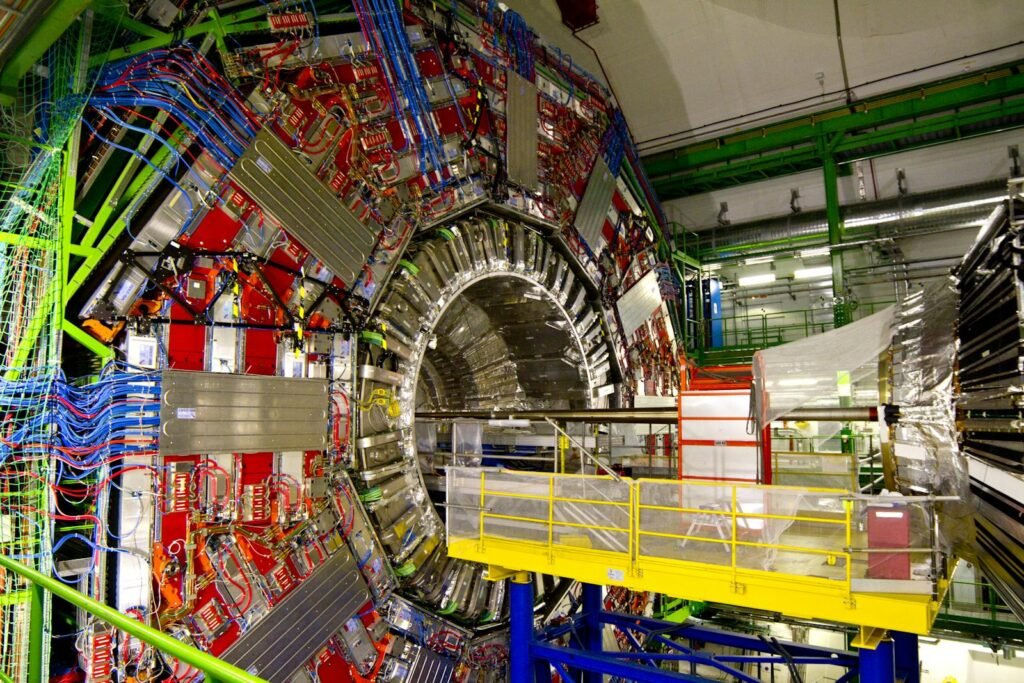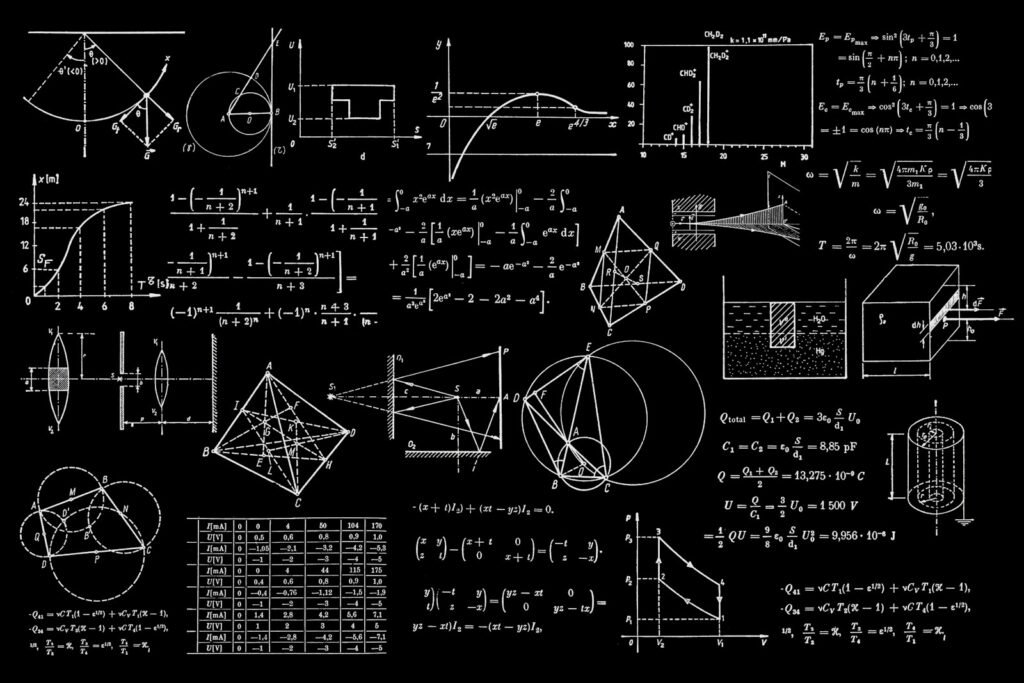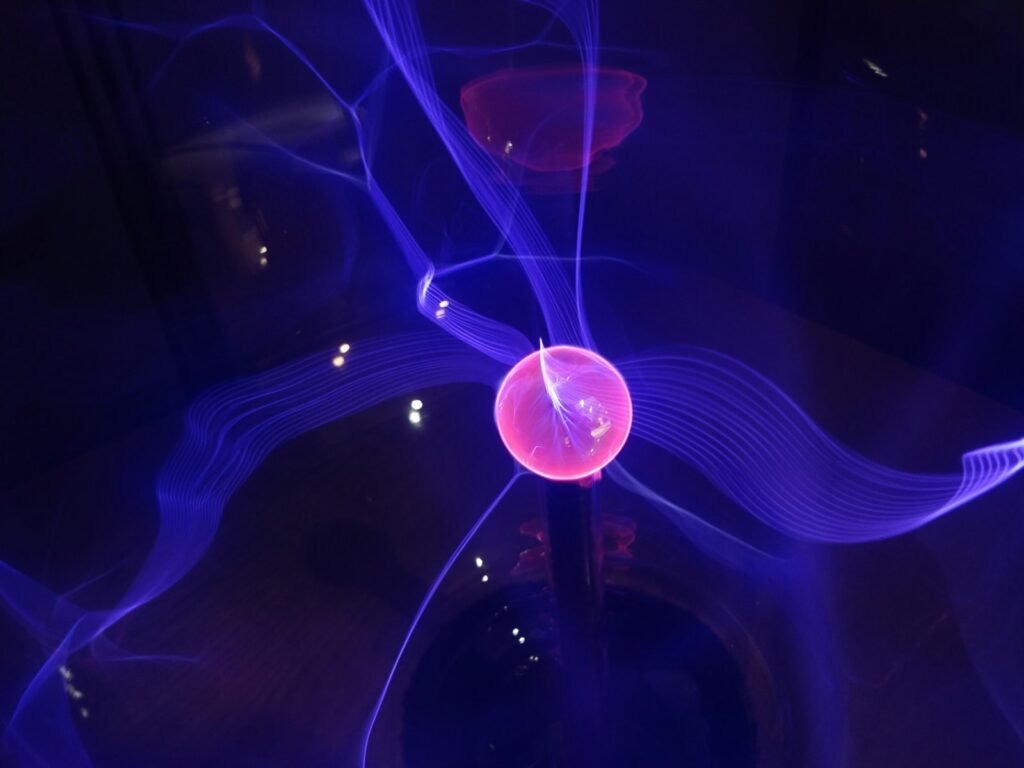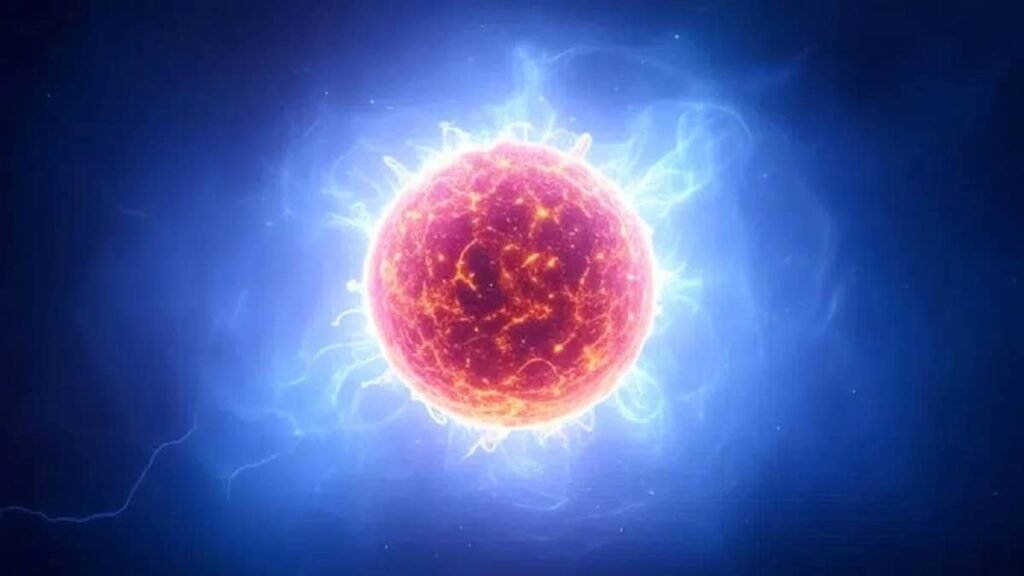In the quiet confines of a pandemic-era dorm room, a graduate student’s mathematical curiosity stumbled upon something extraordinary: a solution so peculiar it hinted at a fundamental oversight in our understanding of quantum reality. What Zhiyuan Wang discovered that afternoon in 2021 would eventually challenge a cornerstone of modern physics: the strict division of all particles into just two categories: fermions and bosons. His accidental discovery pointed to the existence of a third kingdom of particles known as paraparticles, entities that obey entirely different rules than anything scientists have encountered before. This revelation not only questions our basic understanding of quantum statistics but may hold the key to revolutionizing quantum technology and explaining some of the universe’s most enduring mysteries.
For decades, physicists operated under the assumption that nature only permitted two types of quantum statistics, the fermionic rules that govern matter particles and the bosonic behavior that allows force-carrying particles to congregate. The potential existence of paraparticles suggests our quantum universe might be far richer and more complex than previously imagined, with profound implications for everything from dark matter research to the development of fault-tolerant quantum computers.
The Quantum Divide: Beyond Fermions and Bosons

Quantum physics has long operated under a binary classification system for particles:
- Fermions: The particles that constitute matter, such as electrons, protons, and quarks. They obey the Pauli exclusion principle, which prevents any two identical fermions from occupying the same quantum state simultaneously. This exclusion principle is why matter doesn’t collapse in on itself and why electrons occupy distinct “shells” around atomic nuclei.
- Bosons: The force-carrying particles like photons and gluons. Unlike fermions, bosons can congregate in the same quantum state, enabling phenomena like laser beams (where photons move in sync) and superconductivity (where electrons form Cooper pairs that flow without resistance).
This division has been the foundation of particle physics for nearly a century, but it has always contained puzzling gaps. The Standard Model of particle physics, built upon this fermion-boson dichotomy, explains only approximately 5% of the universe the ordinary matter we can see and measure. It remains silent on the nature of dark matter and dark energy, which together constitute about 95% of the cosmos.
Paraparticles Explained: Beyond Simple Swapping

What distinguishes paraparticles from their conventional counterparts is their behavior under exchange. When two identical bosons swap places, their quantum wave function remains unchanged. When two fermions exchange positions, their wave function acquires a minus sign. Paraparticles exhibit something more complex: they possess hidden internal degrees of freedom and additional quantum properties that transform in intricate ways when particles are exchanged.
Imagine two paraparticles, each with an internal “color” property one red and one blue. When they swap places, rather than simply maintaining their colors or just flipping signs, they might both transform into entirely new colors (green and yellow, for instance) in a way that’s mathematically consistent but far more complex than conventional particle behavior.
Measurement Mysteries
This peculiar swapping behavior has fascinating implications for measurement. While two observers working independently might not be able to distinguish between paraparticles, by comparing their measurements, they could potentially determine whether the particles had been swapped. This subtle distinguishability stands in contrast to conventional quantum particles, which are fundamentally indistinguishable in all circumstances 1.
The Mathematical Breakthrough: Reopening a Closed Case

Wang’s breakthrough came while working with the Yang-Baxter equation, a mathematical relationship that appears in certain exactly solvable models of statistical mechanics. This equation acts as a consistency condition for particle scattering processes, preserving momentum while allowing changes to internal quantum states.
“When I found a curious solution to the problem I was working on, and when I interpreted it physically, paraparticles appeared,” Wang recalled. His advisor, Kaden Hazzard, was initially skeptical: “I said, I’m not sure I believe this can be true, but if you really think it is, you should put all your time on this and drop everything else you’re working on”.
Their subsequent paper in Nature presents refined mathematical models that demonstrate how paraparticles could emerge as quasiparticles collective excitations in certain quantum materials rather than as fundamental particles. This approach circumvents the historical objections to paraparticles by showing they can exist within the framework of quantum field theory without violating fundamental principles.
Experimental Hunt: Where Paraparticles Might Hide

The most promising near-term prospects for detecting paraparticles lie not in high-energy particle colliders but in carefully engineered quantum materials. Researchers are particularly interested in:
- Rydberg atoms: These are atoms with electrons excited to very high energy states, causing them to roam far from the nucleus. Their unusual sensitivity to electric fields makes them ideal candidates for creating and controlling exotic quantum states. According to Bryce Gadway, an experimental physicist at Pennsylvania State University, “For a certain kind of Rydberg quantum simulator, this is kind of just what they would do naturally. You just prepare them and watch them evolve”.
- Magic-angle graphene: When two sheets of graphene are stacked and twisted at precisely 1.1 degrees, the resulting “moiré” pattern creates flat bands where electrons interact strongly, leading to unconventional superconductivity and other exotic quantum behaviors. These systems may provide fertile ground for paraparticle emergence.
- Topological materials: Substances with special symmetry properties that protect quantum states from decoherence might host paraparticle-like excitations at their edges or interfaces.
Quantum Simulation Advances
The challenge in detecting paraparticles experimentally lies in their subtle statistical behavior. Unlike anyons exotic particles that exist in two-dimensional systems and have been experimentally detected paraparticles can theoretically exist in three dimensions, but their signatures are more difficult to isolate.
Advanced quantum simulators, which use controlled quantum systems to model more complex quantum phenomena, offer perhaps the best near-term hope for creating and detecting paraparticles. These systems allow researchers to engineer specific quantum Hamiltonians that should give rise to paraparticle statistics, then look for their characteristic signatures in correlation measurements.
Implications for Quantum Technology: Beyond Basic Science

One of the most exciting potential applications of paraparticles lies in quantum error correction. The fragile nature of quantum information constantly threatened by decoherence and noise represents the greatest challenge in building practical quantum computers. Paraparticles, with their unique statistical properties, could provide new mechanisms for encoding quantum information in fault-tolerant ways.
The peculiar swapping behavior of paraparticles might allow for novel quantum communication protocols. As researchers note, “Using their exotic exchange statistics, two parties with paraparticles could communicate by swapping their positions without ever coming close to each other and without leaving any trace detectable by a third party”.
Materials Science Revolution
If paraparticles can be reliably created and controlled in condensed matter systems, they could lead to entirely new classes of quantum materials with unprecedented properties. These might include:
- Novel superconducting phases with higher transition temperatures
- Exotic magnetic materials for advanced memory storage
- Quantum materials with tailored response functions for sensing applications
Meng Cheng, a physicist at Yale University not involved in the research, suggests, “We might get new models of exotic phases, which were difficult to understand before, that you can now solve easily using paraparticles”.
Global Research Landscape: A Scientific Movement

The paraparticle research revival is truly international, with key contributions coming from:
- Max Planck Institute for Quantum Optics (Germany): Where Zhiyuan Wang now continues his research as a postdoctoral scholar.
- Rice University (United States): Where Kaden Hazzard’s group continues to develop the theoretical framework for paraparticles.
- Institute for Quantum Optics and Quantum Information (Austria): Where Markus Müller’s team has been exploring complementary constraints on paraparticle existence.
This global effort highlights how fundamental physics advances through international collaboration and diverse perspectives. As noted in a related context by Tom Rapoport of Harvard Medical School, “Science has always been international. When we are trying to find the truth, to decipher the problems of nature, we put politics aside”.
Theoretical Challenges and Controversies

Not all physicists are convinced that paraparticles represent a genuine breakthrough. Some remain skeptical that these mathematical constructs will correspond to physical realities observable in experiments. As Frank Wilczek, the Nobel Prize-winning physicist who proposed anyons, commented, “Paraparticles might become important, but at present they’re basically a theoretical curiosity”.
Paul Fendley, who studies many-particle systems at the University of Oxford, notes that the paraparticles predicted by Wang and Hazzard’s model require fine-tuning of particle properties that might be difficult to achieve experimentally: “It’s unlikely you could realize this particle in this predicted form”.
Even among those who accept the mathematical possibility of paraparticles, there is debate about their fundamental nature. Müller’s team has argued that under stricter definitions of indistinguishability particularly in the context of quantum superpositions paraparticles might still be impossible. However, as Müller himself acknowledges, “I find their paper really fascinating, and there’s absolutely no contradiction with what we do”..
Why This Matters: Beyond Academic Curiosity

The pursuit of paraparticles represents more than just specialized physics research; it exemplifies humanity’s enduring drive to understand the fundamental nature of reality. Like Marie Curie’s investigation of radioactivity, which seemed purely theoretical at the time but eventually revolutionized medicine, today’s exploration of paraparticles might unlock applications we can scarcely imagine.
This research also serves as a reminder that scientific understanding is always provisional. As Wang notes, “There was a belief that all fundamental particles must be fermions or bosons. Here we show there could be something beyond that”. The potential discovery of paraparticles would demonstrate that even our most foundational scientific categories remain subject to revision in light of new evidence.
How Readers Can Engage with Quantum Frontiers

For those inspired by this research, there are multiple ways to engage with the exciting world of quantum physics:
- Support basic research funding: Curiosity-driven science often leads to unexpected breakthroughs with practical applications emerging years or decades later.
- Follow scientific developments: Institutions like CERN, Max Planck Institutes, and major universities regularly share research updates with the public.
- Encourage science education: Initiatives like QCraft (which brings quantum concepts into Minecraft) and classroom visits by scientists help inspire future generations of researchers.
- Maintain international scientific collaboration: As paraparticle research demonstrates, scientific progress thrives when researchers from diverse backgrounds can collaborate freely.
The Enduring Quest for Understanding

The story of paraparticles from their theoretical origins a century ago to their recent mathematical revival illustrates how science often advances through unexpected pathways. What began as a graduate student’s pandemic diversion may ultimately transform our understanding of the quantum world.
As research continues, physicists remain cautiously optimistic about detecting paraparticles in laboratory systems. Their discovery would not only expand the taxonomy of quantum statistics but might provide new tools for tackling some of the most challenging problems in physics, from quantum decoherence to the nature of dark matter.
In the words of Spiros Michalakis, a quantum researcher who regularly engages with young students about science, “People often say, ‘Study hard so that one day you can cure cancer, figure out the theory of everything and save the world!’ But I would rather see you all do things to understand the world” 9. The quest to understand paraparticles represents precisely this kind of fundamental curiosity-driven science, the pursuit of knowledge for its own sake, with the potential to unexpectedly transform our world in the process.
Sources :
Quanta Magazine , Physics Magazine , The Quantum Insider

Suhail Ahmed is a passionate digital professional and nature enthusiast with over 8 years of experience in content strategy, SEO, web development, and digital operations. Alongside his freelance journey, Suhail actively contributes to nature and wildlife platforms like Discover Wildlife, where he channels his curiosity for the planet into engaging, educational storytelling.
With a strong background in managing digital ecosystems — from ecommerce stores and WordPress websites to social media and automation — Suhail merges technical precision with creative insight. His content reflects a rare balance: SEO-friendly yet deeply human, data-informed yet emotionally resonant.
Driven by a love for discovery and storytelling, Suhail believes in using digital platforms to amplify causes that matter — especially those protecting Earth’s biodiversity and inspiring sustainable living. Whether he’s managing online projects or crafting wildlife content, his goal remains the same: to inform, inspire, and leave a positive digital footprint.




